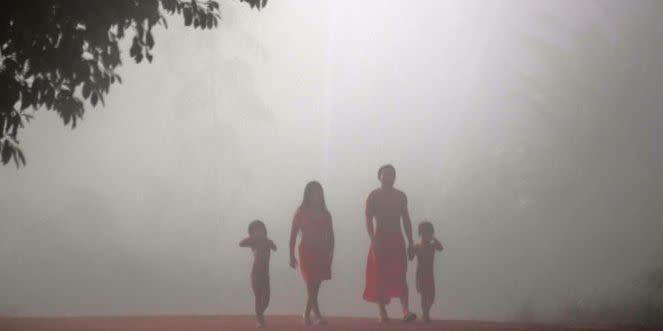Brains Are Aging More Slowly in This Hidden Part of the Amazon, Scientists Say

"Hearst Magazines and Yahoo may earn commission or revenue on some items through these links."
A new study of tribes in the Amazon shows that, as they age, they lose less brain volume than those in Western society.
The study authors draw a correlation between high body mass index and bad cholesterol numbers, and brain volume shrinkage—which are not seen in the tribes.
Other environmental factors could contribute to the discrepancies, leading the authors to pursue further research.
The lifestyles of indigenous South American populations differ greatly from those of Westernized society. And according to recent research, those differences may be helping tribes in the Amazon combat increased brain volume loss as their members age, reducing the threat of cognitive disease.
The new study, published in the Proceedings of the National Academy of Sciences, studied the Tsimane and Moseten populations in the Amazon, and looked specifically at how their brain volume in middle and old age differs from middle- and old-aged people in high-income nations. The stark contrast in diet and exercise couldn’t be ignored.
Lead researcher Hillard Kaplan of Chapman University in California has worked in the region for decades, from both a humanitarian and anthropological standpoint. His access allowed a team to study 1,165 people from ages 40 to 94, and compare brain volume data with similar existing studies of Western societies.
The Tsimane brains lose about 2.3 percent of their volume per decade, and the Moseten people lose 2.8 percent. Both lose less than the 3.5 percent drop seen in Western societies. The older the population, the starker the contrast.
“Little is known about brain aging or dementia in non-industrialized environments that are similar to how humans lived throughout evolutionary history,” the study authors write, noting that the Amazon people spend much of their days actively hunting and foraging for food. We do know, however, that high-income societies begin see brain volume declines—and, thus, a reduction in cognitive abilities and rise in disease—as early as age 40.
The two indigenous societies show that the association of body mass index and non-HDL cholesterol with brain volume is largely positive, only declining with high BMI and bad cholesterol. In Western countries, however, we see a brain volume decrease corresponding to a rise in body mass index. “This discrepancy represents a form of evolutionary mismatch we call an embarrassment of riches due to the recent changes in diet, activity, and other environmental exposures,” the authors write.
Kaplan tells Wired that people in the Amazon physically work hard to get their food, unlike Western civilizations. “We’re at the point where we’ve overshot the mark,” he says. “We have too many calories, too little physical activity, leading to negative effects on our brains [sic].”
The lower rates of dementia, coronary artery disease, and diabetes among both Tsimane and Moseten, combined with the brain volume findings, imply that lifestyle values have a direct impact on aging outcomes, the study says. The study claims that this is especially true in terms of diet and exercise.
“Something about the lifestyle is affecting brain aging,” Kaplan tells Wired.
While the remote Bolivia-based lifestyle isn’t for everyone—a lack of an urban structure reduces access to education, healthcare, and more—there’s a balance present in those environments that people in the United States and Europe could learn from, Kaplan says.
“Future research,” the authors write, “should focus on how our evolved biology interacts with conscious goals in relation to eating, exercise, and physiology.”
You Might Also Like

